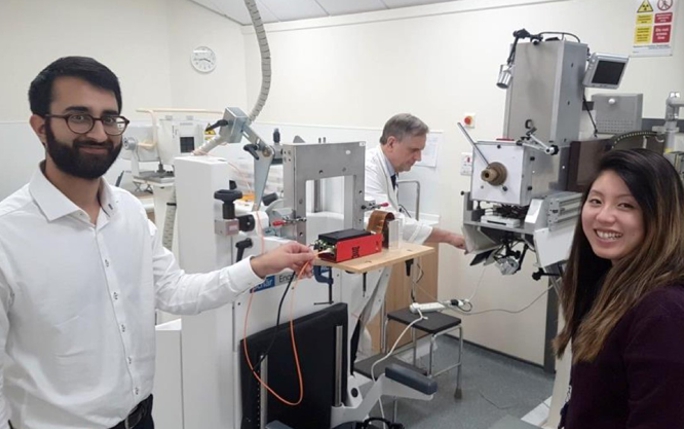Enhancing cancer treatment through beam transport optimization

A paper presenting a comprehensive study of the Clatterbridge Cancer Centre (CCC) proton beam therapy facility has been published in the European Journal of Medical Physics (Physica Medica) by QUASAR Jacinta Yap and colleagues from CCC, UCL and John Adams Institute/RHUL. CCC is the world’s first hospital based proton beam therapy facility and has been treating ocular cancers since 1989. Over the past years, the facility has supported a strong research programme covering several challenges within particle therapy, including detector development and radiobiological studies
Proton therapy is an advanced modality of radiation therapy which utilises a beam of protons to safely and precisely deliver radiation to tumour volumes. The physical characteristics of protons and the combination of technologies which deliver and shape the beam, allow the dose to be concentrated at the specific site of the tumour whilst minimising radiation to surrounding healthy tissue. In recent years there has been a rapid growth in the number of clinics being built around the world, particularly centres which treat at higher energies (> i.e. 160 MeV). This allows the beam to penetrate further into the body and deliver radiation to deeper seated tumours. However, earlier built facilities continue to treat for certain candidates, including uveal melanomas which have the highest incidence rate for adult eye cancers. Proton therapy is the gold standard treatment for eye tumours: CCC is a pioneering facility and one of a few dedicated ocular clinics in the world.
As such, different facilities have varying treatment requirements depending on a multitude of factors. Ultimately, the beam is generated and delivered as a result of several considerations including, the facility design, accelerator, beam transport, beam diagnostics and delivery technique. These aspects are often well known at modern facilities however may be limited for those built earlier, including CCC which is a unique facility. Therefore, a complete investigation was performed to characterise the facility in order to better utilise the capabilities of the beamline for research and experimental work.
Jacinta said: “This paper overviews the beam dynamics studies of the Clatterbridge proton therapy ocular facility, for accurate simulations and end-to-end characterisation of the beamline. As several particle therapy related experiments and studies are performed at Clatterbridge, this work aims to provide a better understanding of the accelerator, transport and delivery of the beam as well as additional tools for improved modelling capabilities.”
An extensive review was carried out to retrieve beamline information restricted by facility related uncertainties and to accurately define the magnetic elements. These transport the beam from the cyclotron (source) to the treatment room and must be accurately defined. To account for various limitations, the magnetic parameters were optimised and a nominal case was implemented which would best represent the present day conditions of the facility. This information is defined in an optical lattice which was modelled in two codes (MAD-X) and (BDSIM) to simulate the behaviour, transport and distribution of the beam.
Therefore, the Twiss parameters, transmission, phase space and size of the beam could be known anywhere along the beamline, enabling end-to-end characterisation. These provided the definition of the beam at the start of the treatment room and were used in a simulation model of the delivery system built in another code (TOPAS). The transverse beam profiles were simulated and compared to measurements with EBT3 Gafchromic film. Similarities between the two distributions demonstrate the applicability of the input beam parameters derived from the developed optical lattice.
The paper presents an approach to retrospectively characterise a proton therapy facility and develop computational models for accurate simulations. This work provides an overview of the beam dynamics of the CCC beamline as useful for upgrades, integration of diagnostics, research work and may also be similarly applied at other facilities.
More information:
'Beam characterisation studies of the 62 MeV proton therapy beamline at the Clatterbridge Cancer Centre', Jacinta Yap, Javier Resta-López, Andrzej Kacperek, Roland Schnuerer, Simon Jolly, Steward Boogert, Carsten P. Welsch, Physica Medica, Volume 77, September 2020, 108-120